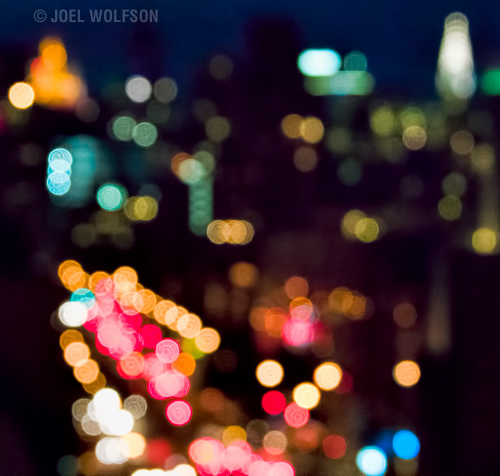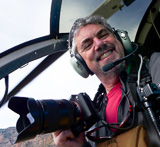Bokeh in Perspective
Why all the Hype?

So what the heck is bokeh and what is all the hype over it? First, let’s define it. Bokeh refers to the aesthetic quality of out-of-focus areas in an image*. Usually it means the specular highlights although I’ve seen bokeh used to refer to any area that is out of focus. To be specific it only refers to out of focus areas, not any other kind of blurring like motion blur.
Why is there so much hype over bokeh? My best answer is that it’s an obsession of photographers and others in the photography industry. If you’ve seen a lens review in the last several years you’ll see lots of attention, even special sections, dedicated to discussing and showing the bokeh of a lens at various apertures and in different situations. I recently ran across a new line of professional lenses from a major manufacturer proudly touting that one of the 2 main design goals is pleasing bokeh.
If you look at the big picture (pun intended), especially from the perspective of the non-bokeh-aware population who buy or view photography you might conclude this is over the top. After all, would you buy a high performance car based on how comfortable it is to sit in the trunk? As long as manufacturers aren’t compromising more important aspects of lens design over their concern with bokeh, it’s hard to blame them for catering to those who review or buy their lenses. So it’s our responsibility as photographers to consider this one characteristic of lenses in perspective. Here’s why.
Viewers and buyers don’t notice
I make my full time living selling fine art photography to a wide range of patrons from serious collectors to the average consumer and everyone in between. I’ve sold thousands of images over the years and have yet to hear a single comment about the bokeh in an image, even from photo savvy collectors.
Visual Design and Composition
One of the key principles of visual design is that of having the most important part(s) of your image in focus, hence drawing attention to those areas and by default, out of focus areas don’t have attention drawn to them.

The only people looking at bokeh, especially those scrutinizing it, seem to be photographers. And only a select subset of photographers that place importance on bokeh. From what I can find out the term “bokeh” was coined in 1997 but over time there has been a growing fixation with it. It is now part of nearly every lens review you see.
Unless you are a lens reviewer or perhaps one who regularly shoots abstracts where your main subject is purposely out-of-focus areas, you may be misplacing your priorities to worry too much about bokeh or to make a choice about buying a lens based on its bokeh characteristics. If you are in a situation when you are shopping for lenses where there are two with virtually the same quality and cost but one has nicer bokeh, then by all means use that for the tie breaker.
However, as serious photographers, we really need to keep this concern over bokeh in perspective.
*Because bokeh is really an english word taken from a Japanese word there isn’t a clearly defined way to pronounce it but most people pronounce it like bow (rhymes with oh) – keh (like the Ke in the name Ken)
Happy Shooting!
Joel
Joel Wolfson is an internationally published photographer who loves teaching as much as shooting. He shares his 25+ years of experience as a working pro with other photographers and enthusiasts by way of his workshops, 1 on 1 training, webinars, articles, blog and speaking engagements. His technical articles have been translated for use in more than 30 countries yet he is best known for his artistic images of nature’s fleeting moments and unexpected views of everyday places around the globe. He is one of the pioneers of digital photography having conducted digital photography seminars for Apple and other corporations starting in the early 90s. His roster of notable clients includes numerous publications and fortune 500 companies. He currently works with great affiliates like Topaz Labs and Arizona Highways to have more avenues for working with those wanting to pursue their love of photography. His goal is to make learning and improving one’s photography easy, fun and rewarding.


Great observation Joel! I just read an article (probably the same one) that pointed out the beautiful bokeh with the 9 aperture blades of a very expensive pro lens. I’m sure it’s true, but like you, I find those specular highlights problematic no matter how pretty they might be in all of their bokeh finery.
Seems to me I’m usually trying to get rid of the bokeh!
Thanks for your insight – I have never figured out what the fuss is about and usually associate it with specular highlites